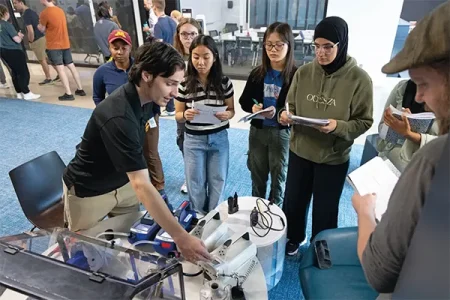When does older adulthood start? Chronological age can’t precisely pinpoint the time, but certain positive changes often occur in the later decades of life, such as honoring the knowledge you’ve gained, self-acceptance, and, often, self-renewal.
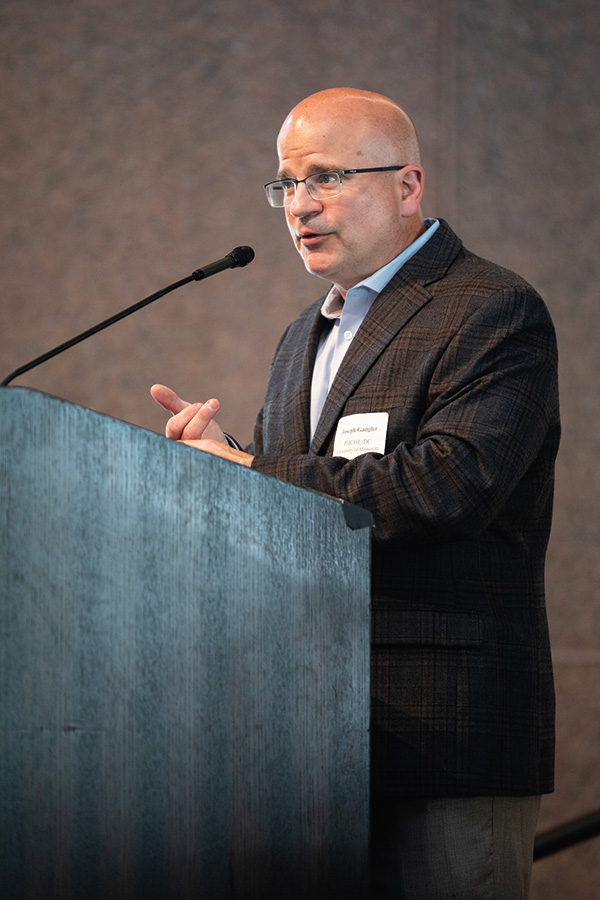
At the same time, aging can bring challenges. There will usually be a decrease in height and body cell mass, for example. Bones generally become less dense and muscles weaken. There may be changes in memory and thinking. People can certainly thrive as they age, but they may need extra support for physical, social, psychological, and financial wellbeing.
Aging is complex and connected to nearly every aspect of contemporary life, from how we handle disease to how we design crosswalks to how we address the needs of racial, ethnic, and sexual minorities.
It’s this complexity that inspired the School of Public Health to create the Center for Healthy Aging and Innovation (CHAI), an initiative that reaches beyond the school, and beyond the University, to promote research, teaching, and community involvement to make the culminating years of life better for everyone.
“We see ourselves as a hub, as an outward-facing ‘collaboratory’ to advance science, practice, education, and policy in the sphere of aging,” says CHAI’s director, Professor Joseph Gaugler, who holds the Robert L. Kane Endowed Chair in Long-Term Care and Aging. Gaugler, a specialist in dementia and its care, oversees a sprawling project with three main sections: research; education; and equity and community engagement. The last section connects particularly with Black, Indigenous, people of color, and people from other marginalized communities, where help for older people may be limited.
A Center Reborn
The title of Gaugler’s appointment honors the man who built CHAI’s immediate predecessor, the SPH Center on Aging. In 1994, Robert Kane and his wife and research partner, Rosalie, created one of the few units in a public health school focused on the science of aging. With Kane’s death in 2017, the center folded. Gaugler and SPH Associate Professor Tetyana Shippee, who had both worked with the previous center, decided to create a reincarnation of it that would be outward-oriented. “The goal for us was to be intentional in creating partnerships across units at the University and in the community,” says Gaugler.
“We see ourselves as a hub, as an outward-facing ‘collaboratory’ to advance science, practice, education, and policy in the sphere of aging.”
Joe Gaugler
“We started this work in 2019,” adds Shippee, whose research focuses on promoting the quality of long-term care and addressing equity for people from communities of color and for LGBTQ+ older adults. “We were deep in the throes of forming the center all through the active phases of the pandemic. It’s nice to see CHAI growing and getting more attention, because it has been a labor of love.”
‘Hatching’ Research
Shippee, born in Ukraine and trained in sociology and gerontology at Purdue, serves as associate director of research. Her research section is an active incubator for new work on aging, beginning with its Grant Idea Hatching Workshops.
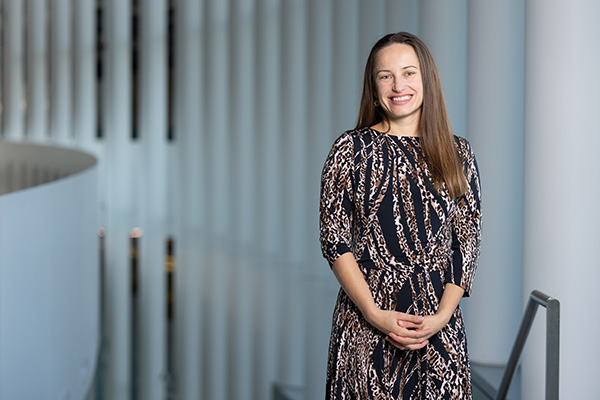
“People from anywhere, any department on any U campus, can bring an idea, as long as it’s about aging,” she says. “The idea doesn’t have to be fully baked; it’s like hatching an egg. We provide feedback on issues such as where to get funding. We make suggestions to flesh out the idea. And we match people with others for collaboration.”
For researchers whose ideas are more or less developed, there’s the Specific Aims review: Shippee and colleagues study their grant proposals and give feedback on the clarity of their ideas and on potential improvements.
Special interest groups bring together scholars focused on one or more of the many aspects of aging. “It might be finances and aging or transportation and aging or a number of other areas,” Shippee says. “They come together and decide how to work together. We have work on LGBTQ+ aging and Alzheimer’s and dementia-related work going on. Some groups have started working on joint papers; some have submitted conference presentations.”
Shippee’s portfolio as associate director of research also includes an external speaker series that brings nationally recognized experts on aging to campus, and monthly meetings of an idea-exchange forum for senior researchers and practitioners called the Aging Work Group.
The work group epitomizes the wide reach of CHAI and its “outward-facing” essence. Its members include a large number of SPH faculty, as well as people from other campuses, colleges, and schools at the University and from across the state, and colleagues at eight major colleges and universities outside of Minnesota.
Visions of Aging, Wellbeing, and Equity
Shippee also oversees the Fesler-Lampert Chair in Aging Studies, a grant program that gives a U of M faculty member in any department a year of research funding. SPH Associate Professor Carrie Henning-Smith, who held the chair during the 2021-2022 academic year, is a committed contributor to CHAI’s research support work.
America’s countryside is Henning-Smith’s focus. During her Fesler-Lampert year, she analyzed a national study of social well-being and social isolation among older Americans, looking for rural/urban differences. She also surveyed the social infrastructure available to older adults in rural counties in Minnesota, discovering sources of strength — libraries, senior centers, farmer’s markets, churches, American Legion and VFW halls, public parks — along with gaps, and differences from county to county.
When it comes to challenges, personal situations come into play, too. “If you have underlying health conditions or functional limitations that make it difficult to leave the house, or if you don’t have accessible transportation or ample financial resources, it’s harder to take advantage of social opportunities,” says Henning-Smith.
Limited opportunities, of course, are an old story in America’s marginalized communities. Assistant Professor Shekinah Fashaw-Walters, the current holder of the Fesler-Lampert Chair, is studying home healthcare companies that serve Black older people as one way of investigating and reducing the disparities in care between aging Black and white communities.
“Residential segregation is no longer legal in our country, but we still see it, and it impacts healthcare,” says Fashaw-Walters. “Neighborhoods that are predominantly Black or Hispanic, those that are socially or economically deprived in some way, tend to have fewer high-quality home health agencies or other community-based services. As a result, more folks in those communities use nursing homes as opposed to aging in place, which is typically what older adults want.” The lower quality of home healthcare in these neighborhoods, she notes, may be linked to fewer resources and lower reimbursement.
Yet her research has shown that some home health agencies serving marginalized communities do have high-quality ratings. She wants to know what they do differently. “If we can identify the processes that work as well as the processes associated with challenges, barriers, and terrible failures, then we can help to teach providers how to provide the best care — and how to undo some of the systemic injustice that’s woven into the fabric of our healthcare system and the larger society,” she says.
Educating about Aging
The centerpiece of CHAI’s educational mission is the Interdisciplinary Graduate Minor in Gerontology, which earns its “interdisciplinary” title by requiring coursework in behavioral and social science, aging science and medicine, long-term care issues, and public policy about aging. Drawing on the U of M’s ample course resources on aging, it’s administered by CHAI’s associate director for education, Rajean Moone.
“Education is a really important component of our vision for a community, state, tribal nation, country, and world where every individual can achieve their life goals while aging,” he says.
To that end, Moone also oversees student scholarships, a workshop series for professionals in aging-related fields, and the student-led Aging Studies Interdisciplinary Group. An additional responsibility for Moone is serving as the founder and leader of the Age-Friendly University Council, the U of M’s commitment to an international initiative to make campuses more welcoming to older people and easier for them to access and navigate. In 2020, the U of M became the first higher education institution in Minnesota to receive Age-Friendly University designation from the Age-Friendly University Global Network.
“In 2022, older adults became the state’s largest age group,” he says. “That demographic shift brings many challenges, but it’s also an opportunity for us, as a land-grant university and a leader in aging research, to really engage retirees, lifelong learners, and older Minnesotans in campus life for their benefit and ours.”
Earning Community Trust
Perhaps the most distinctive feature of CHAI is its robust commitment to dismantling the ivory tower — connecting its academic activities and resources on aging to communities, especially underserved communities, in order to both aid and learn from them. For this task, CHAI reached out to a professional with decades of practical experience.
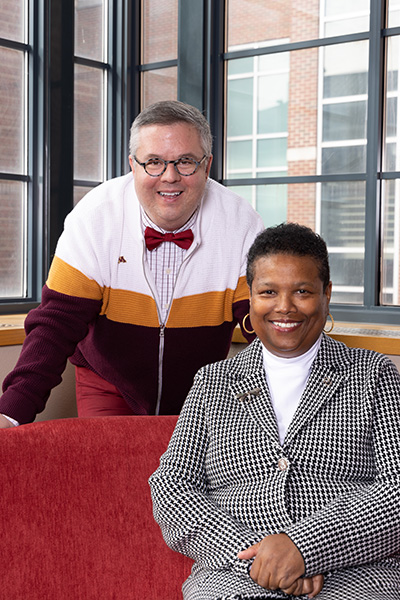
Robbin Frazier, associate director for equity and community engagement, began her career as a telecom executive, but in 2007 entered the health arena, bringing her business savvy to healthcare organizations as a consultant, and starting a franchise home care agency. The shift eventually led her to five years with the Alzheimer’s Association of Minnesota, leading initiatives in equity, diversity, and inclusion.
In 2020, Gaugler tapped her for the CHAI post, and she went to work developing the Community Advisory Board, made up, so far, of 20-plus individuals from the Black, East and West African, South Asian, LGBTQ+, Latino, Hmong, East Indian, and Native American communities.
“We created the board to bring forward the lived experiences of its members and to advise us on the needs and the priorities in their communities, which wouldn’t normally be represented at the table,” says Frazier. The priorities identified by the Community Advisory Board will guide and inform CHAI’s future work in research and education as well.
Frazier also brought the Minnesota branch of an innovative faith-based program, Alter, under the CHAI umbrella. The program works with Black churches — key sources of support for older African Americans — to increase their knowledge of dementia and other age-related issues. “Alter brings in a strategic framework to meet the needs of congregations and gives churches resources to modify worship services, to make them more dementia-friendly,” Frazier says. “Many people get disconnected from their spiritual communities as they age, because it’s simply harder for them to take part.”
Frazier sees the Community Advisory Board and Alter as the nucleus of an evolving and robust relationship between communities and CHAI — one that provides opportunities for researchers to work in the real world, for older adults and their partners to share their wisdom with academics, and for community members, including nonprofit leaders, to benefit from the latest research.
“Education is a really important component of our vision for a community, state, tribal nation, country, and world where every individual can achieve their life goals while aging.
Rajean Moone
But key to that evolving relationship, and to CHAI’s mission as a whole, is reciprocity and staying power. “Given everything that we’ve experienced here in the Twin Cities in the last few years — the social and racial justice issues, which include lower levels of care for minority people and less trust on their part in providers — we have to earn their trust,” says Frazier. “Communities need to know that CHAI’s involvement with them isn’t a one-and-done deal.”
Twelve Down, 75 to Go: Joe Gaugler’s Alzheimer’s Odyssey
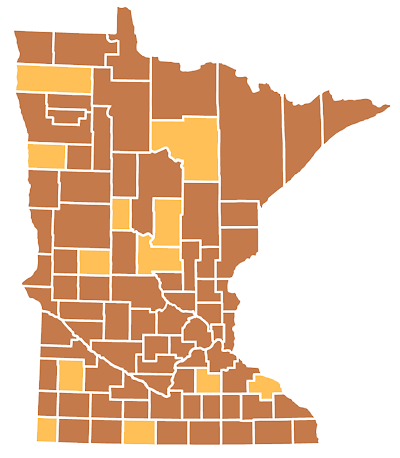
CHAI director Joe Gaugler is gearing up to resume an ambitious, COVID-delayed trek to every one of Minnesota’s 87 counties, speaking about Alzheimer’s and other forms of dementia, highlighting local resources, and letting people know about what CHAI has to offer in support of patients and caregivers.
“Back around 2008, the state had some funding for dementia education and it asked me to go out to some of the area agencies on aging in northern Minnesota,” he says. “I gave talks throughout the north and what I said really resonated with folks.” In 2018, he decided to visit every county, one a month. “I hit around 11 before the pandemic, and then we pivoted to doing webinars. But we started up again, live, in September and I visited Norman County in western Minnesota.”
Gaugler not only disseminates information on his travels; he also surveys local resources — which were sometimes spotty, sometimes surprisingly ample — and learned about local needs. “You don’t find out this stuff sitting at your computer,” he says as he contemplates 75 more trips. “You’ve got to get out in these communities physically. It’s the old-fashioned way, and the only way.


